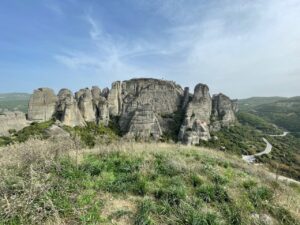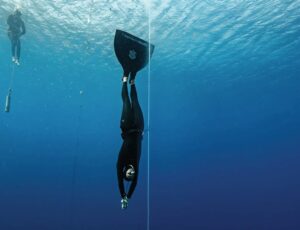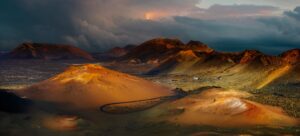Michael Rockefeller disappeared under mysterious circumstances in November 1961 while on an ethnological expedition to New Guinea. His family’s fame, the circumstances leading to his disappearance, and the disturbing clues into his likely demise caused an international sensation. His death attracts curious minds to this day.
An unlikely passion
Michael Rockefeller was born on May 18, 1938, into one of the world’s wealthiest and most influential families. He was the fifth child of businessman and eventual U.S. Vice President Nelson Rockefeller. The family had a hand in many of America’s institutions, even helping to develop major cities like New York.
But money and power did not seem to appeal to the last child of Nelson Rockefeller and his first wife Mary. Michael did not have the same proclivity for business as his father. He was more interested in other cultures, traveling, and art. As a teenager, his father founded the Museum of Primitive Art, and the art of indigenous groups fascinated Michael.

The Rockefeller Center in New York City, built by the Rockefeller family in 1939. Photo: Songquan Deng
At his father’s behest, he attended Harvard University to study history and economics. There, he met filmmaker Robert Gardner and joined him on an expedition to western New Guinea, at the time a Dutch colony.
Michael served as a sound man for the documentary Dead Birds, a collaboration with the Harvard Peabody Museum of Archeology and Ethnology. It was Michael’s first taste of the life he wanted, a life of exploration.
Michael’s father had named him a trustee of the Museum of Primitive Art. He saw his first trip to New Guinea as an opportunity to study the artwork of the Asmat people. He had heard that they were great artists.
With another team member, he launched a sub-expedition to meet the Asmat. He hoped to feature their art in the museum back in New York. The sub-expedition was a success, Michael was fascinated, and determined to acquire some cultural artifacts. In his letters, he referred to the Asmat as a “puzzle” to be solved.

An Asmat man participates in the Asmat Festival in Ancol, Jakarta. Photo: Birul Sinari Adi
His own expedition
Not long after his first trip, he returned to New Guinea for his own expedition. Rene Wassing, a Dutch anthropologist commissioned by the Dutch colonial government, accompanied him, along with two Asmat teenagers. They visited Asmat villages and traded with the residents to acquire an array of spears, drums, horns, and shields with intricate designs. However, the fruitful trip soon turned sour.
On November 17, Michael, Rene, and the Asmat teenagers were crossing the 20km-wide mouth of the Betsj River when their pontoon boat capsized in bad weather and cross-currents. The Asmat boys managed to swim to shore and set off to find help. Michael and Rene spent an entire night clinging to the overturned boat. Fearing they would drift further out to sea, Michael eventually decided to swim for the distant shore. He stripped down to his underwear, tied two empty 18-liter cans to his waist as floaties, and swam for it. He was never seen again.
Rene was later rescued by Dutch authorities.

Asmat carvings. Photo: John Ohoiwirin
A frantic search for the lost Rockefeller began. Michael’s father, stepmother, and twin sister traveled to the island, and the Dutch government searched for him with planes, helicopters, and boats. But after two weeks, the search ended. In 1964, Michael was declared dead. The official cause of death was drowning.
Theories
Though officially drowned, there are other popular theories. Michael was a strong swimmer and the two Asmat guides had made it to shore. Could Michael have been attacked by sharks or crocodiles? Had he made it but been eaten by cannibals? Perhaps he had run off to live with the natives? The official scenario of drowning sounds the most plausible.
Not long after his disappearance, Rockefeller’s mother and the Dutch government sent investigators to New Guinea. They found skulls that bore marks of headhunting, a grisly practice of the Asmat. These skulls had supposedly been in the possession of the tribesmen. However, they were never tested for authenticity, and the Rockefeller family never affirmed that they had found Michael’s remains.

Michael Rockefeller with the Asmat. Photo: Jan Broekhuijse/Peabody Museum
Some people believed that Michael had given up his family’s lavish lifestyle to live among the Asmat. He greatly admired them and their way of life. However, the Asmat were not welcoming and often viewed white people as evil spirits. It is unlikely they would have taken him in.
Cover-up?
Another theory involves a cover-up. Some media outlets published rumors that Michael had been killed and eaten by cannibals. New Guinea’s colonial government was in trouble, the Dutch had handed half of the island to Indonesia, and they struggled to maintain their power in the region. If cannibals had indeed murdered Rockefeller, it would undermine the government’s legitimacy and authority in the region, or so goes the conspiracy theory.
In 1969, a journalist named Milt Machlin traveled to the village of Otsjanep and came across a possible motive for murder. He heard about the 1958 massacre of Asmat leaders by Dutch officers. The Asmat believe in the restoration of balance, and revenge killings can prevent wronged spirits from tormenting the village. This led Machlin to surmise that after Rockefeller made it to shore, the Asmat murdered him.
Decades later, American anthropologist Tobias Schneebaum claimed he spoke to some villagers in Otsjanep. They claimed to have cannibalized Rockefeller. A Catholic priest named Cornelius Van Kessel, who knew the Asmat well and assisted in the search, saw tibia and thigh bones decorating tribesmen’s spears that supposedly belonged to Rockefeller.
Case reopened
In 2014, American journalist Carl Hoffman embarked on a journey to Otsjanep to find answers. He too was told of the 1958 massacre. Hoffman spoke to locals, showing photographs of Michael. He heard stories suggesting that Michael reached shore, only to be brutally killed by several tribesmen in retribution for that 1958 massacre.
Hoffman became close with a villager named Amates who recounted the story of a white tourist who was killed around that time. Despite the subject being slightly taboo in the village, the villagers looked at the photos Hoffman provided and pointed out some men who carried human bones. These were the same men Father Cornelius Van Kessel had met previously. However, it is important to note that no one from the village officially confessed to the murder.
Furthermore, not long after Rockefeller’s demise, a deadly cholera outbreak killed 70 people in the village. Hoffman suggests that some villagers believe that it was punishment for murder. The compelling evidence does not stop there. Hoffman recalls seeing a man reenact the murder of a white man, while cryptically telling the journalist to never speak of the event again.
Hoffman returned to the U.S. and published his book, Savage Harvest: A Tale of Cannibals, Colonialism and Michael Rockefeller’s Tragic Quest for Primitive Art. Hoffman’s insight is considered the most in-depth analysis of Rockefeller’s disappearance. Still, he did not come to a firm conclusion.
Today, no one knows where the bone fragments are, and the skulls found in the 1960s were never tested for Rockefeller’s DNA. The Rockefeller family doesn’t seem interested in reopening the case.
Michael Rockefeller’s legacy lives on in New York. There are 200 artifacts currently on display in the Metropolitan Museum of Art in New York, in a wing named after him.





